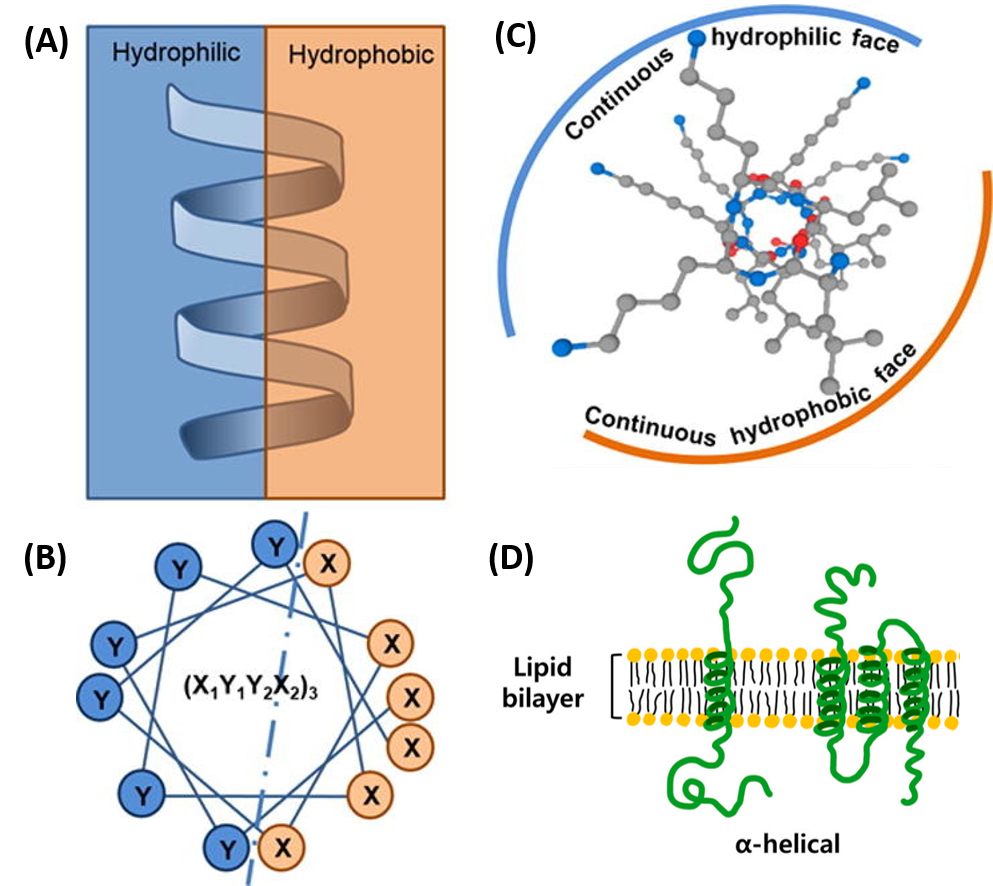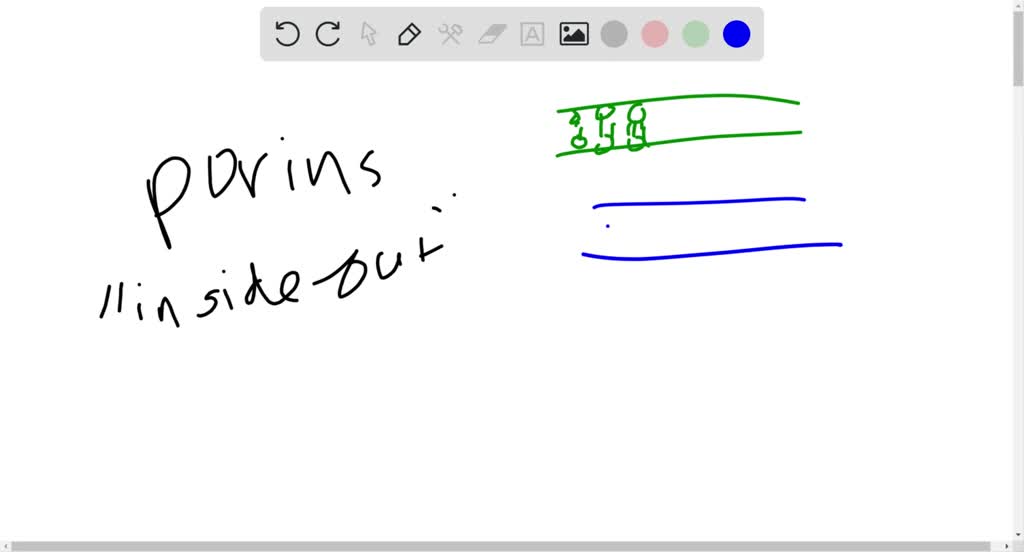21 Which of Following Structures Contains a Hydrophilic Interior
The fatty acid residue and the phosphate group b. The substances that cannot mix with water are known hydrophobic substances.

Phospholipids Biology For Majors I
Structure and Function of the Cell Multiple Choice 1.

. 21_____ Which is a property of integral membrane proteins. D It can dissolve nonpolar molecules deep in its core. Which of following structures contains a hydrophilic interior.
Thus the membrane surfaces that face the interior and exterior of the cell are hydrophilic. The structure is also known as a phosphoglyceride. Lipids Objective Type Questions Answers for competitive exams.
Proteins are arranged so that hydrophilic amino acids are on the surface of the protein and hydrophobic amino acids are in the interior. Why is an α helix particularly suited to existence in the hydrophobic environment of the interior of a membrane. The picture below shows a molecule of glucose.
Hydrophilic polymers contain polar or charged functional groups rendering them soluble in water. The fatty acid. Main Difference Hydrophobic vs Hydrophilic Molecules.
The fatty acids of lipid molecules are found in the interior of the membrane. Residue and part of the. The structural and functional unit of all living organisms is the Aribosome.
Linseed oil lanolin and Glycogen attract water hence contain a hydrophillic structure but rubber does not attract water and does not contain a hydrophobic structure. Which of the following could be used to study general features of cells. They automatically arrange themselves in a certain pattern in water because of these properties and form cell membranes.
In contrast the interior of the cell membrane is hydrophobic and will not interact with water. The hydrophilic regions of the phospholipids tend to form hydrogen bonds with water and other polar molecules on both the exterior and interior of the cell. A Tertiary structures usually contain hydrocarbon R-groups in the interior of the protein where they can form hydrogen bonds.
The phospho of phospholipid indicates the presence of a phosphate group. 21_____ Which is a property of protein tertiary structure. When the head and two tails structural model is applied to a sphingophospholipid the two tails are a.
Hence hydrogen bonding and ionic interactions with water are particularly common at the protein surface. Cholesterol has a fused four-ring steroid nucleus and is a part of body membranes. Considering this structure predict whether.
B All integral membrane proteins span the entire membrane. Which of the following structures is a 202 delta 49 fatty acid. Which of the following structures contains DNA.
Hydrophilic heads and hydrophobic tails. The fatty acidresidue and part of the sphingosine molecule c. The lipid part of the name refers to the two long hydrocarbon chains.
These Lipids Objective Questions with Answers are important for Board Exams as well as competitive exams like AIIMS NEET and other Pre-Medical Exams. In which one of the following amino acid myoglobin is likely to be localised highly within the interior of the molecule. Broad flattened sacs that extend from the nucleus and have ribosomes attached to them.
The OH group on carbon 3 is the polar head and the rest of the molecule provides the hydrophobic tail that does not fit into the zig-zag packing of the hydrocarbon portion of the saturated fatty acids. Which of following structures contains a hydrophilic interior. Organelles are structures that allow eukaryotic cells to carry out more functions than prokaryotic cells.
Terpenes and carotenoids are biosynthesized from which lipids. One of the largest structures in the cell contains DNA. This problem has been solved.
Which of following structures contains a hydrophilic interior. Faces the exterior and interior of the cell. Glycine is a optically inactive b hydrophilic basic and charged c hydrophobic d hydrophilic acidic and charged.
Phospholipids are able to form cell membranes because the phosphate group head is hydrophilic water-loving while the fatty acid tails are hydrophobic water-hating. B Tertiary structures usually contain hydroxyl R-groups on the exterior of the protein where they can favorably interact with water. Hydrophobic interactions are more common in the protein interior.
A All integral membrane proteins contain hydrophilic regions. Structure ii is an amino acid structure iii is an oligonucleotide and structure iv is a carbohydrate. The fatty acids of lipid molecules are found in the interior of the membrane.
Hydrophilic interior between hydrophobic regions in inverse bilayer structures of cation11 0 -binaphthalene-22 0 -diyl phosphate saltsw Thomas Dorn Anne-Christine Chamayou and Christoph Janiak. The black balls are carbon atoms the red balls are oxygen atoms and the white balls are hydrogen atoms. C It is composed of short-chain fatty acids with polar heads.
Which of the following structures is a 202. Given that the insides of membranes are highly hydrophobic Section 122 predict what type of amino acids would be in such an α helix. The substances that can mix with water are called hydrophilic substances.
Which of the following is true with respect to a micelle in a hydrophilic environment. THIS SET IS OFTEN IN FOLDERS WITH. B The structure as a whole is hydrophobic.
Bonds between carbon atoms share electrons equally and no static electrical charge is created. The mitochondria Golgi apparatus and the endoplasmic reticulum are examples of organelles. A molecule of glucose has both hydrophobic and hydrophilic portions.
Aa magnifying glass Bscanning electron microscope Ctransmission electron microscope. Location is everything 2. But all compounds in nature do not mix with water.
A Arginine b Valine c Aspartic acid d Lysine. Organelles are structures located in the cytoplasm. In the cell membrane the hydrophobic part of the phospholipid molecule.
Water is a well-known solvent for the dissolution of most of the compounds we know. Proteins that span biological membranes often contain α helices. The phosphate group and part of the sphingosine molecule d.
A The interior is hydrophilic. CH3CH29CH CHCH23CH CHCH22COOH. Most hydrophilic polymers are grouped by the chemistry of their structure.

Chapter 2 Protein Structure Chemistry

Solved Most Proteins Have Hydrophilic Exteriors And Hydrophobic Interiors Would You Expect This Structure To Apply To Proteins Embedded In The Hydrophobic Interior Of A Membrane Explain

Comments
Post a Comment